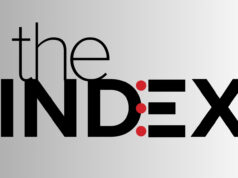As new data and insights about the relationship between physical, mental, and behavioral health emerge, it’s become clear: treating the whole person’s health is better for the individual and can have indirect benefits to your business. Given that May is Mental Health Awareness Month, there is no more important time to highlight the importance of caring for mental health and wellness.
During the Covid-19 pandemic, many of us have a heightened state of anxiety and stress. A recent Kaiser Family Foundation poll showed that nearly half of adults in the United States reported their mental health has been negatively impacted due to worry and stress over the virus, and as the crisis evolves, this statistic will likely grow. More than ever, it is necessary to look at how behavioral health conditions impact employee productivity and absenteeism, and see that offering people self-serve resources at home can help address their mental wellness. According to recent data published by Forbes, mental illness can cost American workers up to $193.2 billion in lost earnings per year. Depression, alone, is thought to count for up to 400 million lost workdays annually.
At Livongo, we have been working intentionally not only to better understand the mind-body connection but also to provide our members and their employers with better solutions – to improve both employee and business health. But, in even more frank terms, are there tangible business and bottom line impacts and benefits for treating the whole person?
To better understand this, we completed an in-depth analysis to determine the relationship between age, chronic conditions and behavioral health issues, and direct spending by employers. We discovered some fascinating facts, including the following:
- Chronic conditions and behavioral health issues impact the lives of employee populations of all ages—especially those in the 18 to 34 age group—not just the older members.
- Medical claims demonstrate that a lack of effective treatment for people with physical and behavioral health conditions costs businesses nearly twice as much as people who received behavioral health treatment.
- This is about more than just diabetes and behavioral health: the combination of several chronic conditions, in addition to behavioral issues, costs more than the sum of its parts.
Unpacking the data
We analyzed claims data from 210,000 participants over the course of one year. We looked at people who had chronic and behavioral health conditions, and assessed the various ways these conditions overlapped. The population was broken down by age group. Here are a few major takeaways:
- People with co-occurring diabetes and behavioral health issues are the highest cost group—and they cost two times more than Members with just diabetes.
- Behind that, Members with behavioral health and another chronic condition—such as asthma—are the second costliest.
- While older people are costlier across all conditions, younger people with behavioral health conditions are also driving significant costs.
Consider the data presented in the Figure 1 graph below:

(Source: Livongo)
Key findings
One of the key findings in this data is that age is not the main driver of costs. Our employers’ 65+ population is not the cohort most likely to be impacted by combined chronic and behavioral health conditions. While the 65+ population rightly gets a lot of attention, based on the assumption that this small percentage of your overall population drive more than half of all costs, the data shows that these conditions impact all age groups across the population—especially the group of people younger than 18.
Economic impact
There is a sizable discrepancy between the population size of people with a combination of chronic and behavioral health conditions. Appropriate treatment and monitoring of those conditions can make a real impact on people’s health and on cost savings.
- In the population we examined, over 18,000 Members had a behavioral health condition in addition to diabetes or another chronic condition.
- While that group is only 8% of the total population, they account for almost a third of all spending.
- If their employers could treat these conditions, they could save $2,654 per Member per year ($221 per Member per month)—which could add up to millions in savings for a large employer, according to a study published in the Journal of Affective Disorders

(Source: Livongo. Note: CC stands for Chronic Condition and BH stands for Behavioral Health)
Making the right impact
Of course, such savings depend on identifying and treating behavioral health conditions, which can be a challenge. Since a shocking number of people with mental health concerns aren’t being treated—almost half—anything that helps people become more aware of potential issues and get appropriate treatment will be extremely beneficial.
It’s time to do better for people facing a combination of chronic health and behavioral or mental health challenges. What this study makes clear is that the cost of ignoring the problem goes beyond what some consider soft costs associated with absenteeism or drops in productivity. Rather, the increased costs stemming from poor quality treatment or no treatment at all are staggering—but they don’t have to be. High quality, personalized care that accounts for the needs of the whole person is critical, now more than ever. The ability to offer this remotely is always useful for decreasing stigma and increasing access, but given the current COVID-19 pandemic, this is even more crucial. There’s real value and savings in providing better mind and body care—healthier employees make for a healthier bottom line.








